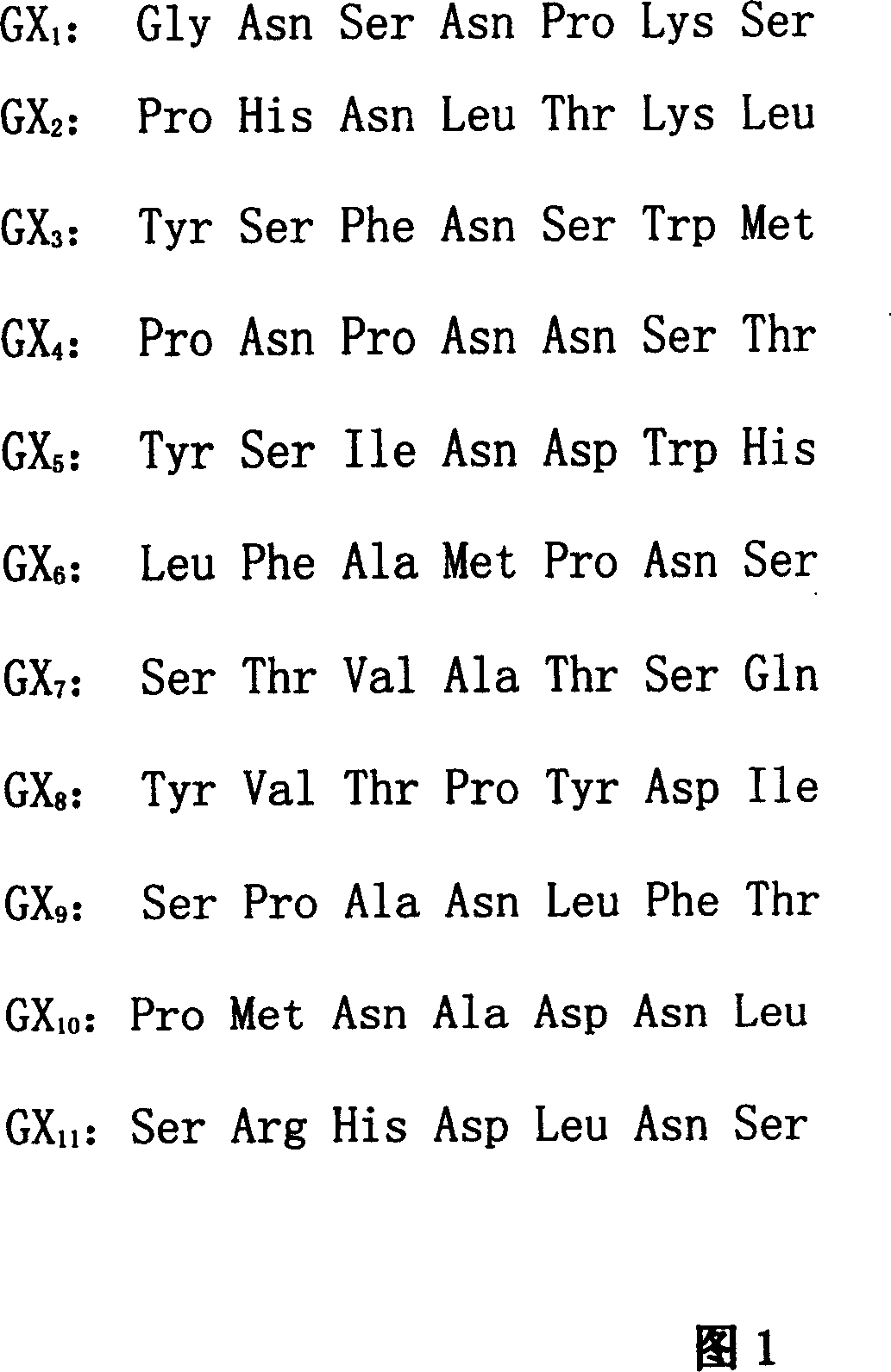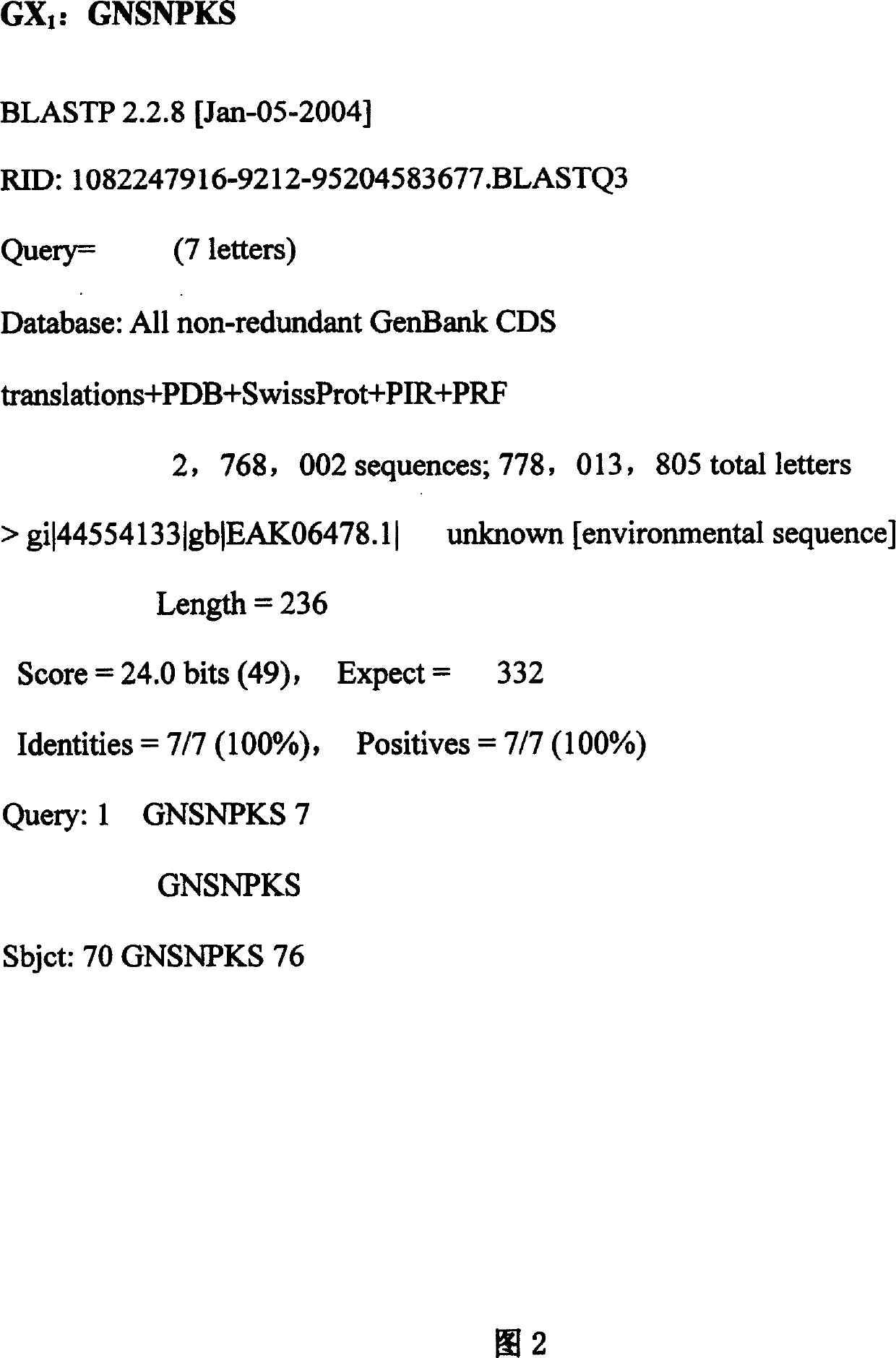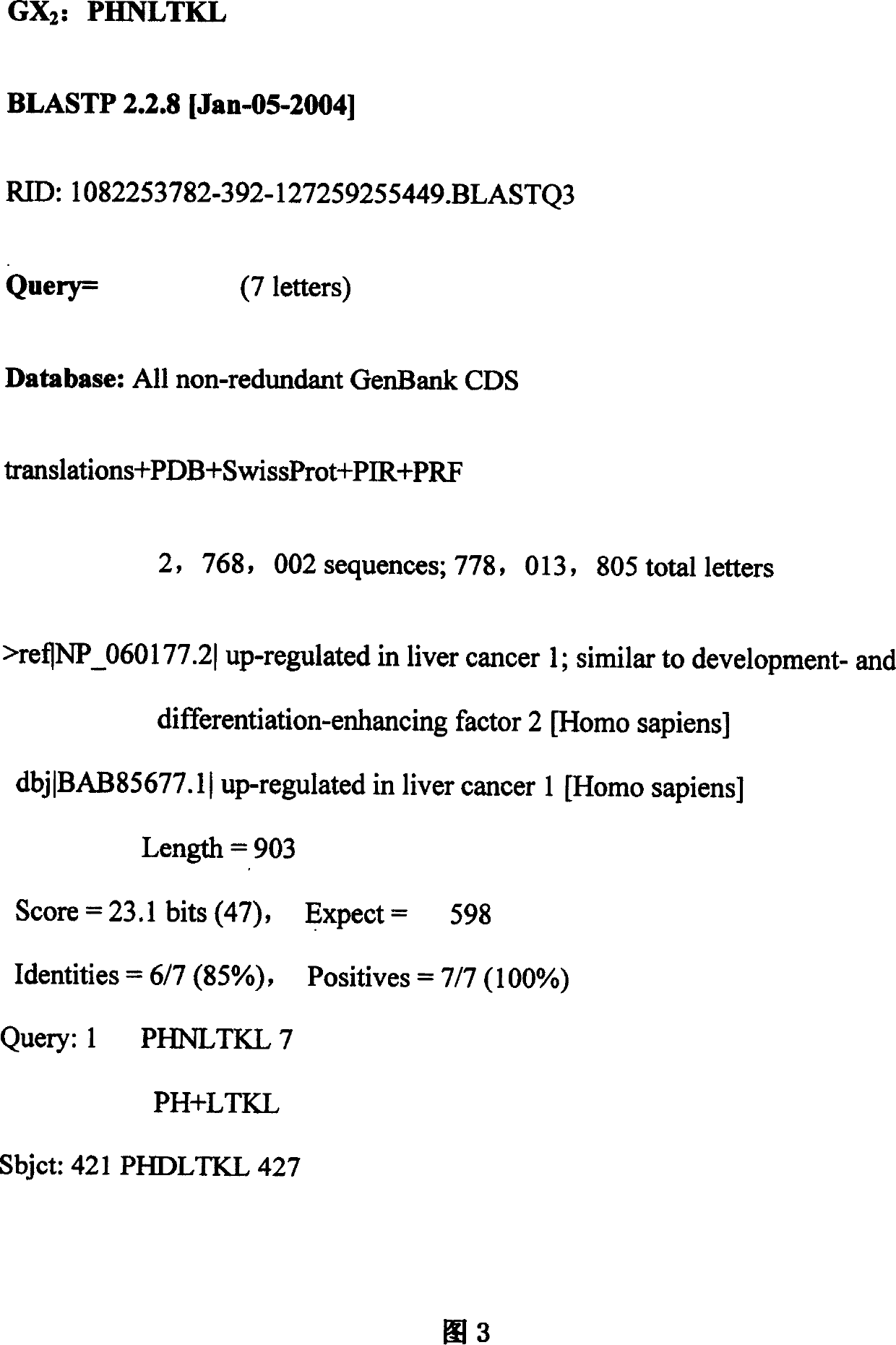11 segment human digestive tract tumoure blood vessel speicfic conjugated cyclopeptide GX series
A digestive tract tumor specific technology, applied in the field of biomedicine, can solve the problems of loss of tissue specificity of endothelial cells, long growth cycle of transplanted tumors, loss of human origin, etc.
- Summary
- Abstract
- Description
- Claims
- Application Information
AI Technical Summary
Problems solved by technology
Method used
Image
Examples
Embodiment Construction
[0035] The present invention will be further described in detail below in conjunction with the accompanying drawings.
[0036] Molecular surface markers of tumor vascular endothelial cells are the basis of tumor vascular therapy. For this reason, the applicant selected phage random peptide library screening technology in vivo, and successfully obtained a group of specific combinations of human gastric poorly differentiated adenocarcinoma and human esophageal squamous cell carcinoma blood vessels. Cyclic 7-peptide GX series, and use plaque formation experiments, immunohistochemistry to detect the specific homing of GX series, and the binding activity of GX series in vivo competition inhibition experiments in tumor-bearing mice, etc., this series of GX peptides have relatively High ability to bind gastrointestinal tumor vascular endothelial cells.
[0037] 1. Technical solution and its route
[0038] 1.1 Establishment of human tumor tissue subrenal capsule xenograft model:
[...
PUM
 Login to View More
Login to View More Abstract
Description
Claims
Application Information
 Login to View More
Login to View More - R&D
- Intellectual Property
- Life Sciences
- Materials
- Tech Scout
- Unparalleled Data Quality
- Higher Quality Content
- 60% Fewer Hallucinations
Browse by: Latest US Patents, China's latest patents, Technical Efficacy Thesaurus, Application Domain, Technology Topic, Popular Technical Reports.
© 2025 PatSnap. All rights reserved.Legal|Privacy policy|Modern Slavery Act Transparency Statement|Sitemap|About US| Contact US: help@patsnap.com



